Artist: Sandro Botticelli
Location: Rooms 10-14
This artwork depicts the goddess of love and beauty, Venus arriving on the island of Cyprus on a large scallop shell.
Housed in a stunning 16th-century palace, the Uffizi is where culture, history, and beauty come alive. No wonder millions queue up each year to experience it!
🖼️ 1,800 paintings
✍️ 177,000 drawings & prints
🗿 300 sculptures
📜 Rare manuscripts & artifacts
Here are the top collections to look out for on your visit.
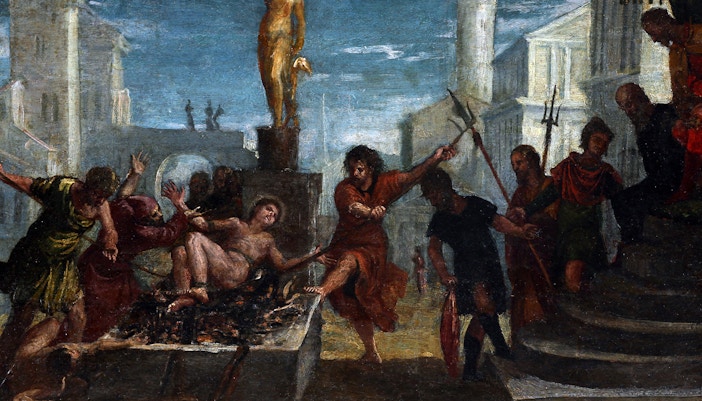
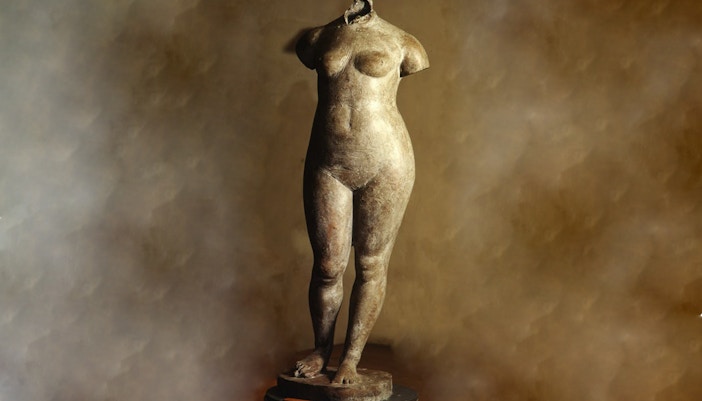
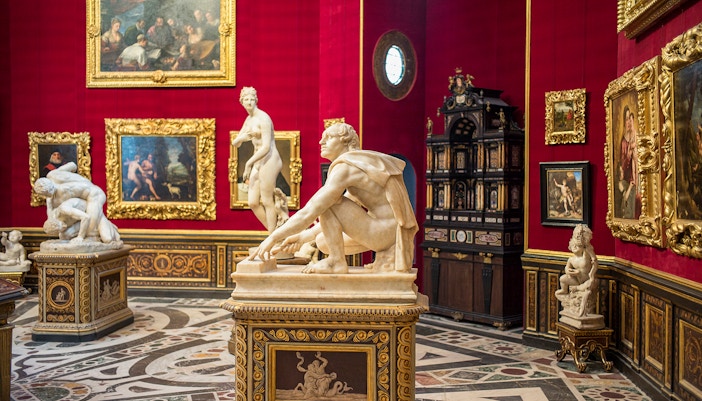
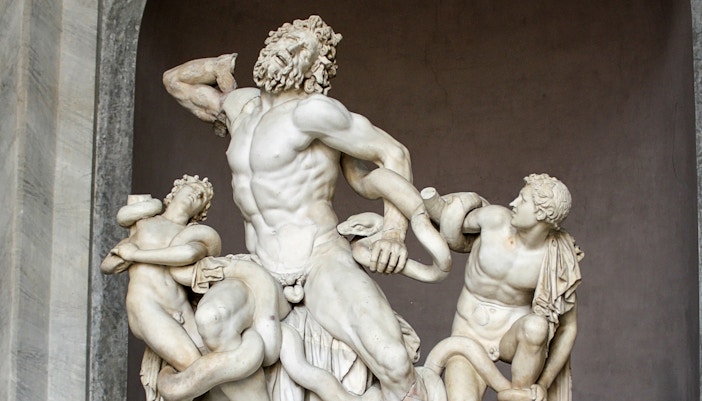
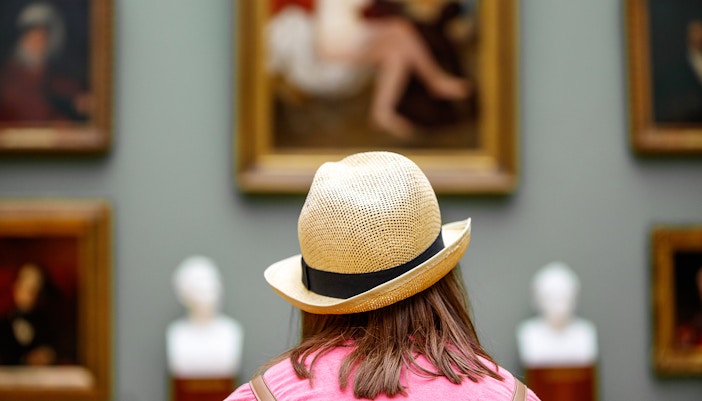
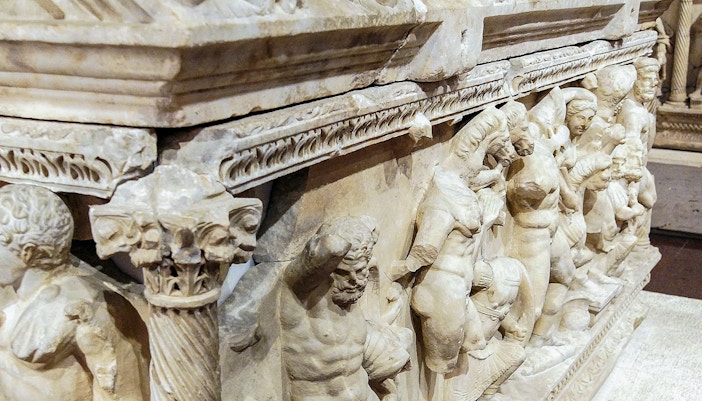
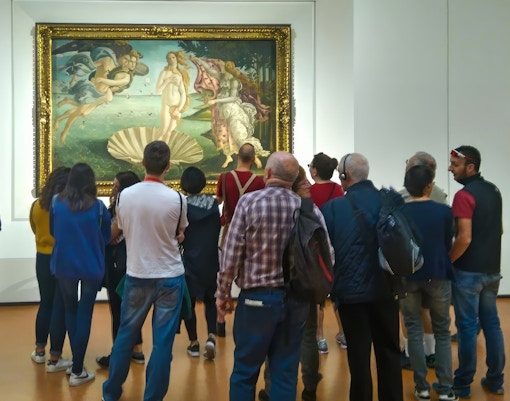
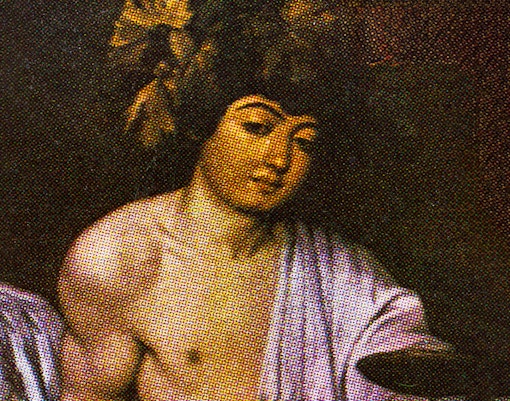
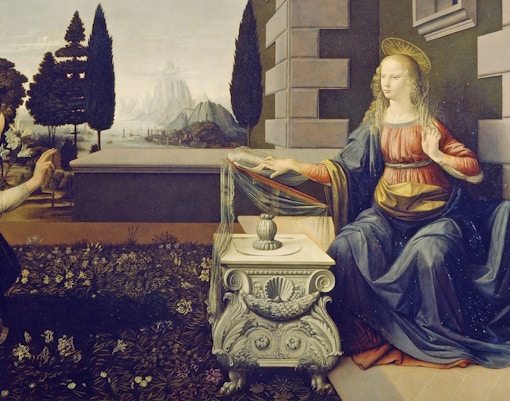
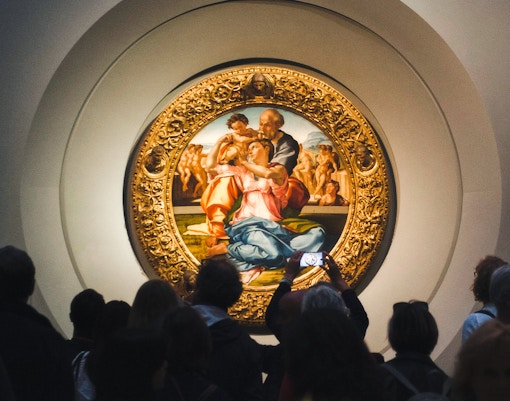
The Uffizi boasts an extensive collection of Renaissance art. The core of Uffizi’s collection comprises paintings featuring works by renowned artists such as Leonardo da Vinci, Michelangelo, Botticelli, and Raphael. It also houses a significant collection of sculptures ranging from ancient Roman copies of Greek sculptures to Renaissance works by Benvenuto Cellini and Giambologna. It also houses one of the most important collections of drawings and prints as well as a collection of decorative arts, & ancient artifacts.
The Uffizi Gallery is renowned for its collection of works by some of the most famous artists of the Italian Renaissance and beyond. Notable artists associated with the Uffizi Gallery include:
- Leonardo da Vinci: Known for his mastery across various disciplines, the Uffizi houses several of his works, including the Annunciation.
- Michelangelo Buonarroti: Although more famous for his sculptures, Michelangelo's painting Doni Tondo is a highlight here.
- Sandro Botticelli: The Uffizi is home to two of Botticelli's most celebrated paintings, The Birth of Venus and Primavera.
- Raphael Sanzio: Renowned for his Madonnas, Raphael's Madonna of the Goldfinch is among the treasures of the Uffizi.
- Titian (Tiziano Vecellio): This Venetian master's works, including the Venus of Urbino, are key pieces in the gallery's collection.
- Caravaggio (Michelangelo Merisi): Known for his dramatic use of light and shadow, Caravaggio's Medusa is a must-see.
The Uffizi Gallery houses more than 6,000 paintings. Apart from this, The Uffizi boasts of a collection of over 10,000 works, including sculptures, prints, and drawings, spanning from the Middle Ages to the modern period, with a particular focus on the Italian Renaissance. It's important to note that only about 2,200 artworks are on display at a given time; the gallery rotates its exhibitions to both preserve the artworks and highlight different aspects of its collection.
No, your Uffizi Gallery tickets allow you to explore the entire collection on display at the Uffizi. You can purchase a standard entry ticket to view the collection at Uffizi Art Gallery.
Uffizi Gallery's famous works include Botticelli's The Birth of Venus, Leonardo's Annunciation and Doni Tondo, Titian’s Venus of Urbino, Madonna of the Goldfinch by Raphael, and Caravaggio’s Medusa.
The Uffizi Gallery's collection is not frequently "updated" in the sense of acquiring new artworks, as its core collection is historic and consists largely of works that have been part of the museum's holdings for centuries, primarily from the Renaissance period. However, the museum does engage in several practices that refresh and enhance the visitor experience and scholarly research.
For example, the Uffizi regularly hosts temporary exhibitions that explore specific themes, artists, or periods, often incorporating works from its storerooms not typically on public display or borrowing pieces from other institutions.
Additionally, due to the sensitive nature of many artworks, especially drawings, and prints that are susceptible to light damage, the Uffizi rotates these items regularly, offering visitors a chance to see different pieces from the collection at different times. And, while rare, the Uffizi does occasionally acquire new pieces through donations, bequests, or selective purchases, often to fill specific gaps in the collection or to complement existing works.
Visitors to the Uffizi Gallery cannot view the entire collection at once due to the vast number of works it encompasses and the practical limitations of display space and conservation requirements. The gallery displays a selection of its most significant and representative pieces to the public, which still amounts to hundreds of artworks across its many rooms.
To manage the preservation of sensitive pieces, such as drawings and prints, which can be damaged by light and environmental exposure, the gallery rotates these works, displaying them for short periods or in special exhibitions. Furthermore, the Uffizi often hosts temporary exhibitions that showcase specific themes, artists, or periods, drawing both from its permanent collection and loans from other institutions, offering visitors a chance to see works that are not always on display.
For those interested in parts of the collection that are not currently viewable in the public galleries, the Uffizi has been working on digital initiatives, providing virtual access to more of its holdings through online galleries and databases, allowing a broader exploration of its treasures beyond the physical visit.
The Botticelli Room, housing The Birth of Venus and Primavera, and the Michelangelo Room are among the most iconic.
While the main halls of the Uffizi are packed with masterpieces, there are indeed some hidden gems and lesser-known spots waiting to be discovered by curious visitors. Discover these hidden gems during your visit: While the main halls of the Uffizi are packed with masterpieces, there are indeed some hidden gems and lesser-known spots waiting to be discovered by curious visitors. Discover these hidden gems during your visit:
Early Italian Art Rooms: Located on the ground floor, these rooms often get overlooked by visitors focused on Renaissance giants. Here, the precursors to the Renaissance, such as Giotto, Cimabue, and Duccio di Buoninsegna, are displayed, providing insight into the art movement's genesis.
Corridor of Maps: This fascinating corridor, forming part of the passage to the Pitti Palace, showcases an extensive array of 16th-century maps and nautical charts. It offers a unique glimpse into the era's worldview and the art of cartography, a delightful detour from the more conventional artworks.
Tribunal Room: This octagonal room, once reserved for the Medici family's private collection, houses some of the gallery's crown jewels. Look out for Botticelli's Venus and Mars, Titian's Venus of Urbino, and Raphael's Madonna Granduca," each a masterpiece deserving close attention.
14th-Century Rooms: Tucked away on the second floor, these rooms delve deeper into the Gothic and early Renaissance periods. Be captivated by Masaccio's realistic frescoes and Taddeo Gaddi's expressive portraits, offering a contrast to the high Renaissance works elsewhere.
Self-Portraits Corridor: Within the Vasari Corridor, lies an extraordinary collection of over 1,000 self-portraits by renowned artists like Rembrandt, Velazquez, and Delacroix.
Yes, the Uffizi Gallery hosts exhibitions and events throughout the year. These can include temporary exhibitions showcasing specific artists or themes, cultural events, and educational programs. The gallery often curates diverse exhibitions that provide visitors with unique perspectives on art and history.
Some rooms inside Uffizi Gallery offer multimedia displays and interactive experiences, particularly in areas dedicated to specific themes or artists.
Within its storied walls, the Uffizi Gallery exemplifies the evolution of art from Gothic to Renaissance to Baroque, presenting a diverse spectrum of artistic expressions. Visitors can explore thematic rooms dedicated to specific schools of art, artists, or periods, featuring an impressive array of paintings, sculptures, and decorative arts that narrate the story of human creativity and innovation.
The Uffizi Gallery interior is quite beautiful! The gallery is spread over several floors, showcasing art works chronologically. It features long corridors lined with artworks, leading to individual rooms dedicated to specific artists or themes.

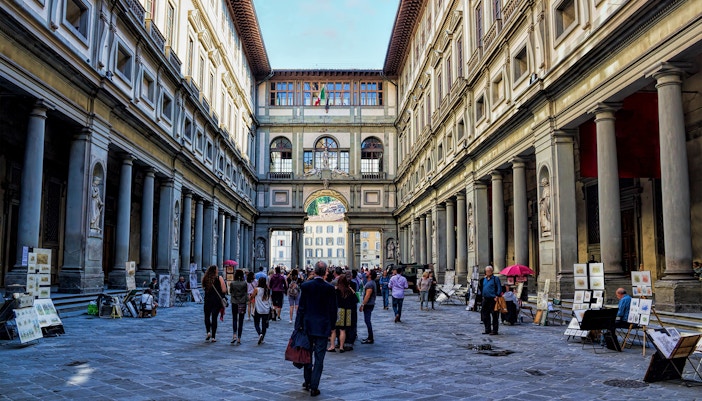
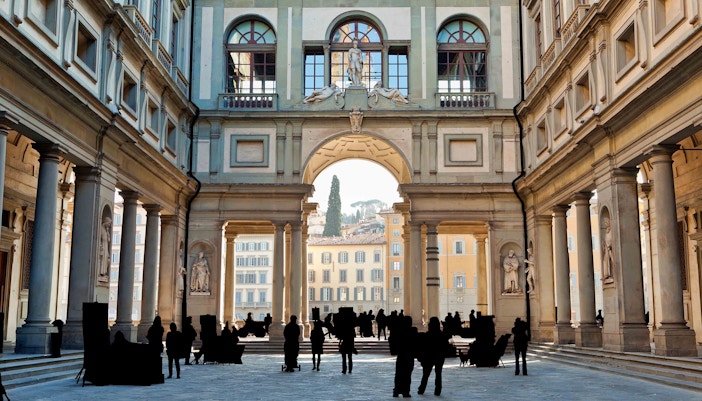













Uffizi Gallery Tickets
Combo (Save 5%): Uffizi and Accademia Gallery Hosted Entry Tickets
Uffizi Gallery Guided Tour With Skip-The-Line Entry Tickets
Uffizi Gallery VIP Small-Group Guided Tour